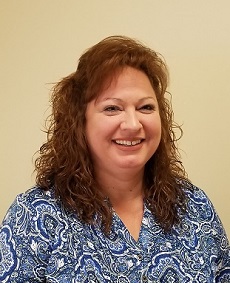Automated Physician Queries Improve Clinical Documentation at WMHS
WMHS ensures medical records are accurate and the health system receives proper reimbursement using a mobile physician query platform.

Source: Thinkstock
- Accurate claims reimbursement hinges on complete clinical documentation, and therefore, quick responses to physician queries regarding medical record documentation and coding. This is especially true in Maryland’s unique hospital reimbursement landscape.
For decades, hospitals in Maryland have operated under an all-payer rate-setting system. Under the model, state officials set the rates for hospital services and all facilities are paid under the same system regardless of payer type.
By 2014, the state modernized the unique all-payer model to include global budget payments tied to patient populations and pay-for-performance incentives. The latest additions to the all-payer model made clinical documentation even more critical for determining hospital revenue and avoiding financial penalties.
But lagging physician query rates at Western Maryland Health System (WMHS) did not put the health system in a position to quickly and accurately capture episodes of care and codes, which could impact hospital reimbursement under the state’s global budget payment model.
“Initially, we had two systems that did queries. Medical records coders would code from one system and the CDIP [Certified Documentation Improvement Practitioner] staff would code from another. These two systems would not speak to one another. That was a big problem right there,” WMHS’s Director of Quality Initiatives Tracey Davidson, RN, recently explained to RevCycleIntelligence.com.
READ MORE: Maximizing Revenue Through Clinical Documentation Improvement
“When either team would write a query for the physician, that would be sent once a day,” she continued. “For Medical Records, a designated staff member would pull a report to see how many queries were written and need to be sent. Then, he/she would print all those queries off and enter them into a deficiency list. Then, he/she would fax all that information to the physician, either to their offices, the physician’s email, or send according to their preference. For CDI queries, CDI staff printed all queries and distributed them in the same manner as Medical Records.”
With physicians receiving queries from two separate departments in various formats, the request for additional information on clinical documentation piled up on their desks. Their staff would print the physician queries and providers would get to the growing stack when they had time between patients.
Office staff under the physician would then manually send back answers to clinical documentation and coding queries, after which a medical records person would need to scan the answer into the patient’s chart and notify the coders that the query was answered.

“This whole process usually took anywhere from three days to sometimes up to three or four weeks,” Davidson elaborated. And physician query response rates hovered between 62 and 65 percent, impacting several of the health system’s financial and quality metrics, she reported.
With hospital revenue on the line, WMHS aimed to streamline the physician query process to ensure charts were closed sooner with the most accurate clinical documentation and codes included. The health system partnered with Artifact Health to implement a mobile physician query platform across all departments in the health system.
READ MORE: Physician Expert, Clinical Documentation Key to MIPS Success
“The coders and CDIP staff now use the same system and when a query is written, it goes directly to the doctor, the doctor answers it and returns it back,” Davidson said. “There’s no middleman. There’s no recording it in a deficiency report list. There is no changing of hands between three or four different people.”
Decreasing duplicative efforts and automating the physician query process increased the response rate from 65 to 100 percent. The streamlined process also resulted in the average time to answer a clinical documentation and coding question dropping from about four days to just four hours.
The mobile component of the automated physician query platform played a major role in the drastic improvement, according to Davidson.
“The doctors can pull it up on their telephone,” she said. “The CDIP write the query, they click send, and they send it to the doctor. The doctor gets a push notification like you would with your email and a little tag comes up notifying the doctor of queries. The doctor clicks on the app, which is secured through password protection, and he/she can go to the queries and answer the query on their telephone. Once the doctor is done answering they hit send and send it right back.”
“Coders and CDIP’s will get a notification that the query is returned. They go in that day and put the query answer into the chart and finalize the chart and close it out.”
READ MORE: Key Ways to Improve Claims Management and Reimbursement in the Healthcare Revenue Cycle
Medical coders also receive the physician’s responses to clinical documentation queries under the integrated mobile platform.
“When coding pulls that up they can see the step that the query is at which has helped reduce duplicated efforts to be able to get that query completed,” she remarked. “Everything is also dated and time stamped, so we know exactly down to the minute where and what is happening.”
While the mobile physician query platform brought medical coding and clinical documentation departments under one system, it also integrated the health system’s EHR system into the physician query process, Kimberly Repac, Chief Financial Officer of WMHS, stated in a March 2018 press release.
Under the automated physician query process, query notes are automatically sent to the health system’s EHR system to ensure medical records are accurate and the health system receives proper reimbursement for the care delivered.
Several months into the implementation of the automated physician query process and WMHS is already seeing their clinical documentation and coding process drastically improve. Lagging response and chart closing rates may be a thing of the past for the health system, but Davidson is still looking for further improvements.
She intends to focus on improving productivity among medical coders, CDIP staff, and even providers. Armed with data on physician query initiations and response times, she can identify procedures or encounters that consistently challenge providers and staff at WMHS.
“Our next steps will be to focus on physicians, CDIP staff, and coding staff that might need additional education,” she said. “We can now focus on patterns that we could not see before. This will help us see if there are inefficiencies and address them to enhance our productivity. “
